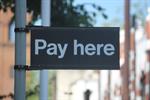Distance Learning Bookkeeping Course
 Who Should Study this Course:
Who Should Study this Course:
- Bookkeepers seeking to upskill in areas covered here (Professional Development).
- Administration staff in a trading business (retailer or wholesaler).
- Owners of trading businesses.
- Graduates of our Bookkeeping Foundations course seeking to take their skills to the next level.
This course is designed to build on a basic understanding of bookkeeping (whether learnt on the job or through an earlier course); and expand your ability to apply bookkeeping in the "real world"; particularly in "trading businesses" (more so than service businesses)
Trading businesses have a major asset which most service businesses do not. That asset (known as ‘stock’, ‘merchandise’ or ‘inventory’) is unique in character – it is obtained by the businesses for one purpose only: selling to customers. Unlike other assets which are obtained and retained by a business, a trading business must rely for its survival on the constant sale of this asset. Because of this, trading businesses need to be able to account for this asset and the individual lines of merchandise which make it up.
A trading business sells goods as its primary source of revenue. A general store, newsagent, chemist, sports shop, clothing store, butcher, supermarket are all trading businesses because they earn most of their revenue through the sale of goods. A trading business may be a retailer (selling direct to the public) or a wholesaler (selling to retailers, manufacturing or service businesses.
Course Structure
There are 10 lessons as follows
 Introduction - Review of Accounting Foundations (add business types)
Introduction - Review of Accounting Foundations (add business types) - Decision Making - How to Manage Your Bookkeeping
- Managing Cash Flow, Obtaining Finance and Managing Bad Debts
- Managing the Inventory Part 1
- Managing the Inventory Part 2
- Profit and Loss
- Establishing and Managing Control Accounts
- Budgeting Part 1
- Budgeting Part 2
- Financial Statement Analysis
Course Aims
 Describe the nature of different businesses, and the differences between recording and reporting for trading businesses and service businesses.
Describe the nature of different businesses, and the differences between recording and reporting for trading businesses and service businesses.- Describe the nature of stock and the physical system of recording inventory.
- Explain the perpetual or continuous system of recording for inventory, the use of stock cards and methods of stock valuation.
- Distinguish between the main methods for valuing merchandise on hand and the procedures that need to be set up in order to maintain the different systems.
- Distinguish between bad debts and doubtful debts
- Explain how to prepare the journal entries and understand the effect of bad debts on final accounting reports.
- Extend your knowledge of the classification in accounting reports and how it is applied to trading firms.
- Acquire an understanding of control accounts and their uses.
- Explain of the use of budgets and to apply the skills learned.
- Explain the use and role played by statements of cash flows.
- Explain the different accounting alternatives available to business and the advantages and disadvantages of the various alternatives.
- Describe the tools used to measure the key areas of performance and financial position of a business and how they can aid in decision making.
- Describe the different sources of finance available to businesses, other methods of expanding a business.
Learn and Apply the Conventions Common to Accounting across the World
There are many conventions (rules) which cover a range of situations using accepted accounting methods (conventions). The most important used by bookkeepers include the following:
The historical cost convention

As with all basic accounting this rule deals with what has happened in the past (within a business). It is possibly the most commonly used accounting convention. Transactions for assets within the business must be recorded at their original cost i.e. the amount paid at the time of purchase less depreciation (if applicable). With some exceptions, for example land which commonly (but not always) appreciates with time, the value of an asset cannot increase - i.e. Inflation or the amount an item could potentially be sold for, are not taken into account. This can have the effect of distorting the true value of a business on the balance sheet – for example a business may buy a warehouse for £150,000. 10 years later the business owner may have an offer of £300,000 for the same building.
On the balance sheet however it still has to appear at its original cost. This is because values are nebulous i.e. you can’t really predict the future value of anything and it is deemed a better approach to record historical value then it would be to guess at a market value. Assets however can from time to time be re-valued to reflect their current worth and appear on the balance sheet with the new value (noted on the balance sheet).
The business entity convention
This separates the business owner (of any type of business entities) from the business, in accounting terms. So any transactions within the business, relate to the business and not to the owner (e.g. when a business owner invests money into the business, it is recorded as a liability that the business has to the owner. If the owner buys withdraws cash (or takes home goods) it is not recorded as a business expense. The owner can’t use the purchase of goods (for private use) as a business expense. This rule ensures that the personal and the business dealings of the owners are always separated.
The going concern convention
This assumes that the business will continue its activities indefinitely and are therefore able to meet its current and future commitments. Because of this assumption, a business can classify assets and also liabilities as short, medium or long term and report them as such on the balance sheet; this prevents the write-off as costs of long term assets, within one accounting period, instead of over many years. This convention also allows assets to appear at book value (at purchase) rather than market value.
The accounting period convention

In order to compare past to present business performance we need to produce accounting reports for a business at meaningful intervals. The length of an accounting period may be a week, a month, a quarter, or a full year, but must not be any longer due to taxation requirements. It may be set to start and end on a certain date for example the 1st of July each year and end on the 30th of June each year – known as the ‘financial year’. Note: in some countries ‘financial years’ differ.
A business’s profit and loss account should show the expenses or the income relating to the period in which they were incurred or generated rather than when an account was paid or income was received. This system is sometimes also referred to as the accruals concept (see the definition given earlier this lesson. The net profit a business makes is therefore more realistic to a given period of time. Accruals are part of the bookkeeping process.
Monetary entity convention
This states that the monetary unit that is used is relevant to the country the business is operating in. In other words in the USA it is the US dollar and Australia the Australian dollar in the UK the pound and so on.
Recognition of Law
Financial reporting in a business is accountable by law. Books must be kept correctly reports must be accurate and correctly reflect the financial transactions of a business.
This is a unique and comprehensive course compiled by a team of bookkeepers and accountants from both Australia and the UK.
If you work in bookkeeping (or in a trading business), this is an excellent way to upskill and differentiate yourself from others in the industry.
Student Comment
"I was very satisfied with the service I received from ACS when I did my Bookkeeping Course. I emailed my assignments using my login at the ACS site and received them back, marked within a week. The comments of the tutor were comprehensive and helpful. The administrative staff also were very quick to reply to any of my emailed questions " - Barbara Kale
What Next?
It's easy to enrol - just go to the top of this page. If you have any questions, please get in touch with us today, by -
Phone on (UK) 01384 442752, or (International) +44 (0) 1384 442752, or use our FREE COURSE COUNSELLING SERVICE.